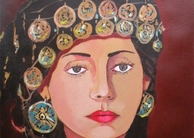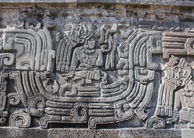Featured Article:Exploring "Locked-In Syndrome" Through the Case of Jean-Dominique Bauby
By
2011, Vol. 3 No. 03 | pg. 2/2 | « Problem of Body-RelatednessBefore we embark on the issue of body-relatedness, it is worth noting that Canguilhem defined the concept of health as our lack of bodily awareness, as a ‘silence of the organs’. Fraser and Greco (2005:20) explain this implicates that the healthy body is subjectively experienced as quiet and unremarkable. Yet, when the body is plagued by illness, the self will come to be aware of the existence and its own relation to the body. For Bauby, he became mindful of his body, paradoxically by its inflexibility and pain inflicted. Consider how he describes his bodily experiences while he is lying quietly in bed: My congested bronchial tubes once more begin their noisy rattle. My hands lying curled on the yellow sheets, are hurting, although I can’t tell if they are burning hot or ice cold. To fight off stiffness I instinctively stretch, my arms and legs moving a fraction of an inch. (p.13) And in another occasion, when he was dressing:… It was a nightmare to put them [hospital gown] on… Watch… over these uncooperative deadweight limbs that serve me only as a source of pain. (p.16) Bauby’s body, previously quiet and unremarkable, now cried out in pain and agony for his undivided attention. The previous relationship between body and self is now seriously interrupted by the new affliction (Nettleson 1995:102). Living with Locked-in Syndrome, he despised his deadened body as a ‘hellish trap’ (p.19), and furthermore considered it to be ‘alien to the acting self’ (Good 1994:124). When Bauby first saw himself after the incident: Reflected in the glass I saw the head of a man who seemed to have emerged from a vat of formaldehyde. His mouth was twisted, his nose damaged, his hair tousled, his gaze full of fear. One eye was sewn shut, the other goggled like the doomed eye of Cain. For a moment I stared at that dilated pupil, before I realised it was only mine.(p.32) Him seeing his own image as a grotesque being reflects the disjunction between his body and his self. He viewed himself not only distanced from his body, he was also estranged from such a body. It is unclear that whether he would consider himself as still having or being the body merely by extracting from his narrative from the book. Nevertheless, from how he struggled to gain control over his body, he seemed to be in a constant battle with his body as a segregated entity, dissociating with body-self relations rather than reconciling between his body and self in the process. In his own brutal words: I am fading away. Slowly but surely. Like the sailor who watches the home shore gradually disappears, I watch my past recede. My old life still burns within me, but more and more of it is reduced to the ashes of memory. (p.85) Problem of Other-RelatednessContrary to common belief, Bauby and other persons living with Locked-in Syndrome enjoy a reasonably active social life. Laureys (2005), quoting from Leon-Carrion et al. (2002), contended that more than half of them lived with their family, regarded their mood as good, enjoyed going out and met with friends at least twice a month. For Bauby, the fact that he could only perceive but not respond to his immediate environment and persons around him poses great challenges for him to engage in intimate relations as before. Below is Bauby’s own portrayal of desperately wanting to connect with yet alienated from his own children, when they visited him at the hospital on Father’s Day: We spent the whole of the symbolic day together, affirming that even a rough sketch, a shadow, a tiny fragment of a dad is still a dad. And when he was playing hangman with his son Théophile, he was constantly reminded of his own ‘zombie father’ (p.77) appearance, and how he might scare his children with his distorted figure: My heart is not in the game. Grief surges over me. His face not two feet from mine, my son Théophile sits patiently waiting – and I, his father, have lost the simple right to ruffle his bristly hair… There are no words to express it. My condition is monstrous, iniquitous, revolting, horrible. (p.79) From this narrative, we witness how Bauby’s alienation from himself extends to from the loved ones around him. His bodily limitation has prevented him from fulfilling the role as lover and a father. He could no longer relive the moment of actually playing with his children on the beach, or to take Théophile on a BMW test-drive – where he had his stroke – or to see the play they were meant to see that day. Perhaps, one of the most propelling forces for Bauby to finish this memoir is that despite his apparent estrangement, he wanted to reveal to his children that deep down in the depths of his silence, what he meant was ‘Don’t be scared, little man, I love you.’ (p.79) He was in fact more eager to connect with the persons he loved than ever. Problem of DesireBauby expressed how he was still rife with desires for the things past throughout his memoir. These fond desires served as a point for his mind’s butterfly to take flight, and the subjects of his vivid recollection ranged from a Lyons rosette sausage to the blissful moment when he shaved his father before the stroke. By ‘cultivating the art of simmering memories’ (p.44), he borrowed freely from the feast tasted by his old self to nurture his new self, to fulfil all his unattainable wishes. Karas Montez and Kamer (2005) observed that the desires expressed by most persons with chronic illness were desires to revert to their previous self. Nevertheless, for Bauby, these desires were not yearning to return to his old self, rather, they were reminiscence of his past, and through which he reconciled with his new self. In one instance, he expressed his desire to be attired as he was in his student days in the hospital, and he told us rather audaciously how through desires, he interweaved his old and new self into his bold personality and existence: My old clothes could easily bring back poignant, painful memories. But I see in the clothes a symbol of continuing life. And proof that I still want to be myself. If I must drool, I may as well drool on cashmere. (p.25) ConclusionTo sum up, Bauby’s experience guided us to examine how the concepts of body, self and embodiment could be interrupted, and how he dealt with the problems of embodiment when living with Locked-in Syndrome. This essay is a point of departure for us to further ponder over Bauby’s mode of existence, the many challenges he faced and perhaps most important of all, the unique insight he provides into his unfathomable diving bell, a rare condition feared by some and unknown by many. Now in the silence of the diving bell, we can finally hear the fluttering wings of the butterfly. ReferencesBauby, J. D. (1997) The Diving Bell and The Butterfly, translated from French by Jeremy Leggatt. London: Fourth Estate Becker, G. (2004) Phenomenology of the Body in C. R. Ember and M. Ember (ed.) Encyclopaedia of Medical Anthropology Springer Camus, A. (1942) The Myth of Sisyphus, translated by Justin O’Brien. London: Penguin Dudzinski, D. (2001) The Diving Bell Meets the Butterfly: Identity Lost and Re-membered. Theoretical Medicine 22:33-46 Frank, A. W. (1995) The Wounded Storyteller: Body, Illness, and ethic. Chicago : University of Chicago Press Fraser, M. and Greco, M. (2005) The body: a reader. London: Routledge Good, B. (1994) Medicine, rationality and experience. Cambridge, UK: Cambridge University Press Karas Montez, J. and Karner, T. X. (2005) Understanding the Diabetic Body-Self Qualitative Health Research 15(8): 1086-1104 Laureys, S. (2005) The locked-in syndrome : what is it like to be conscious but paralyzed and voiceless? In S. Laureys (ed.) Progress in Brain Research, Vol. 150. Elsevier B. V. Leon-Carrion, J., van Eeckhout, P., Dominguez-Morales Mdel, R. and Perez-Santamaria, F.J. (2002) The locked-in syndrome: a syndrome looking for a therapy. Brain Injury 16: 571–582. Merleau-Ponty, M. (1962) The Phenomenology of Perception. London: Routledge Murphy, R. F. (1990) The Body Silent., New York: W. W. Norton Nettleson, S. (1995) The sociology of health and illness. Cambridge, MA: Polity Scheper-Hughes, N. and Lock, M. M. (1987) The Mindful Body: A Prolegomenon to Future Work in Medical Anthropology. Medical Anthropology Quarterly 1:6-41 Smith, E. and Delargy, S. (2005) Clinical Review: Locked-in syndrome British Medical Journal 330: 406-9 Zaner, R. M. (2003) Sisyphus with Knees: Exploring Self-Other Relationships through Illness and Disability Literature and Medicine 22(2): 188-207 Zaner, R. M. (1981) The Context of Self: A Phenomenological Inquiry Using Medicine as a Clue. Athens: Ohio University Press Suggested Reading from Inquiries Journal
Inquiries Journal provides undergraduate and graduate students around the world a platform for the wide dissemination of academic work over a range of core disciplines. Representing the work of students from hundreds of institutions around the globe, Inquiries Journal's large database of academic articles is completely free. Learn more | Blog | Submit Latest in Anthropology |














